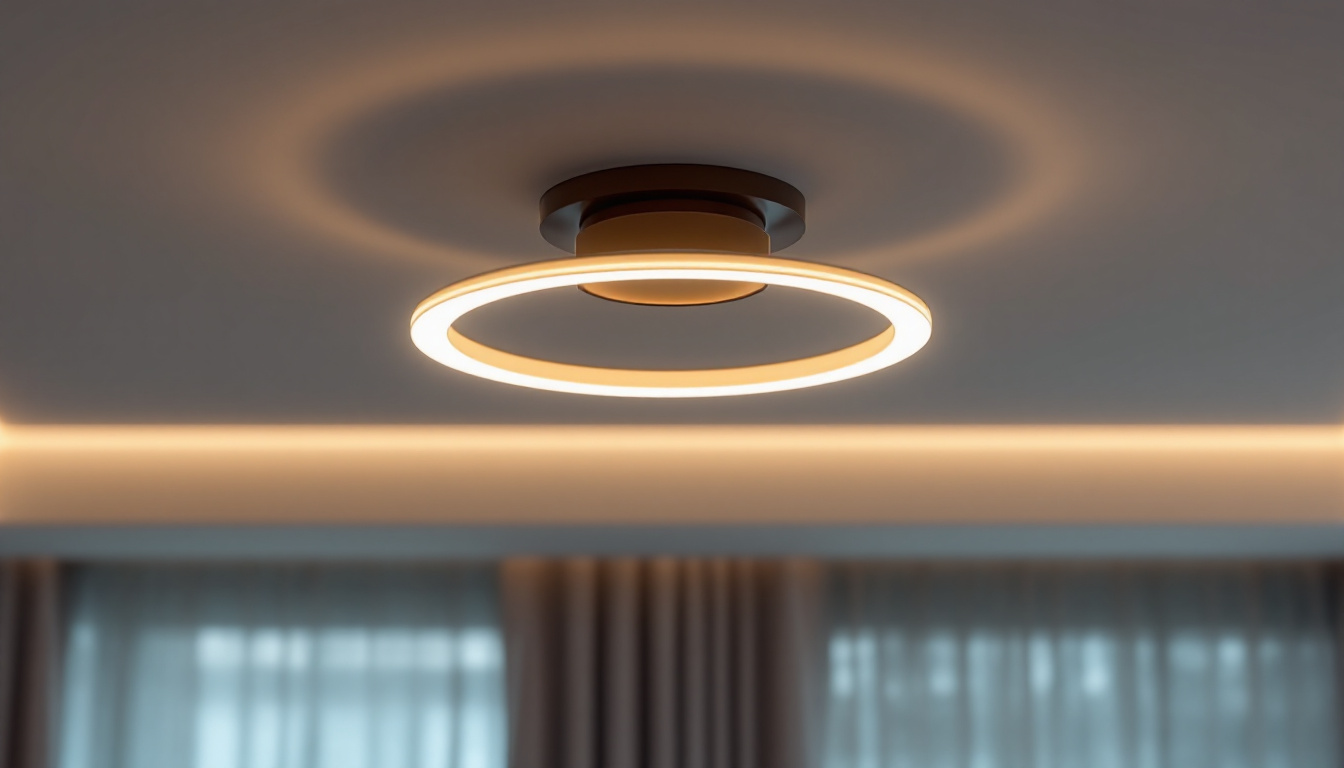
In the world of lighting, the role of lamp ballasts is often understated yet crucial. For lighting contractors, understanding the significance of ballasts can enhance the quality of installations and ensure optimal performance of lighting systems. This article delves into the various aspects of lamp ballasts, their importance, and how they impact the work of lighting contractors.
A lamp ballast is an essential component in fluorescent and HID (high-intensity discharge) lighting systems. It regulates the current to the lamps, providing the necessary voltage to start the lamp and maintaining the proper current during operation. Without a ballast, the lamp would not function correctly, leading to flickering lights or complete failure.
There are primarily two types of lamp ballasts: magnetic and electronic. Each type has its unique characteristics and applications, making it crucial for lighting contractors to understand their differences.
Magnetic ballasts are the traditional type, utilizing electromagnetic coils to regulate the current. They are typically larger and heavier than their electronic counterparts and can be less energy-efficient. However, they are known for their durability and reliability, often lasting longer in certain applications. In environments where extreme conditions are present, such as high temperatures or humidity, magnetic ballasts may outperform electronic versions due to their robust construction.
On the other hand, electronic ballasts have gained popularity due to their compact size and energy efficiency. They operate at higher frequencies, which can reduce flickering and improve the quality of light. Additionally, electronic ballasts often come with features such as dimming capabilities, making them a versatile choice for various lighting applications. This flexibility allows for tailored lighting solutions in spaces like theaters or art galleries, where ambiance is crucial.
The operation of a lamp ballast is relatively straightforward. When power is supplied to the ballast, it initially provides a high voltage to ignite the lamp. Once the lamp is lit, the ballast regulates the current to prevent overheating and ensure stable light output. This regulation is essential for prolonging the life of the lamp and maintaining consistent performance.
Furthermore, ballasts also help to stabilize the light output by compensating for fluctuations in voltage. This feature is particularly important in commercial settings, where consistent lighting is necessary for productivity and safety. In addition to voltage stabilization, modern electronic ballasts often include advanced circuitry that can detect and respond to changes in the electrical environment, further enhancing the reliability of the lighting system. This adaptability not only improves energy efficiency but also minimizes maintenance costs by reducing the frequency of lamp replacements.
Moreover, the choice of ballast can significantly impact the overall energy consumption of a lighting system. By opting for electronic ballasts, businesses can achieve substantial energy savings, which is increasingly important in today’s eco-conscious market. Many electronic ballasts also comply with energy efficiency standards, such as those set by the Department of Energy (DOE) and the Environmental Protection Agency (EPA), making them an attractive option for organizations looking to reduce their carbon footprint while maintaining optimal lighting conditions.
For lighting contractors, understanding the importance of lamp ballasts goes beyond mere technical knowledge. It directly impacts the quality of installations, customer satisfaction, and the overall success of projects.
One of the primary benefits of using the correct ballast is energy efficiency. Electronic ballasts, in particular, can significantly reduce energy consumption compared to magnetic ballasts. By selecting energy-efficient ballasts, contractors can help clients lower their electricity bills and reduce their carbon footprint.
Moreover, many regions offer incentives for using energy-efficient lighting solutions, which can be an attractive selling point for contractors. By promoting energy efficiency, contractors not only enhance their reputation but also contribute to sustainable practices in the industry. These incentives can come in the form of rebates, tax credits, or grants, making it financially advantageous for clients to invest in modern lighting systems. Additionally, as energy costs continue to rise, the demand for energy-efficient solutions is likely to grow, positioning contractors who specialize in these technologies at the forefront of the market.
The quality of light produced by a lamp is heavily influenced by the type of ballast used. Electronic ballasts, for example, provide a more stable light output with less flickering, which can enhance the overall lighting experience. This is particularly important in environments where precise lighting is essential, such as in art galleries, retail spaces, and offices.
By choosing the right ballast, contractors can ensure that their clients receive the best possible lighting solutions. This attention to detail can lead to increased customer satisfaction and repeat business, as clients are more likely to recommend contractors who prioritize quality. Furthermore, the right ballast can enhance color rendering, which is crucial in settings where accurate color representation is necessary, such as in photography studios or design showrooms. By understanding the nuances of lighting quality, contractors can tailor their recommendations to meet the specific needs of each client, further solidifying their role as trusted advisors.
Another critical aspect of lamp ballasts is their role in extending the lifespan of lamps. A well-functioning ballast regulates the current effectively, preventing overheating and reducing the risk of lamp failure. This not only saves clients money on replacements but also minimizes maintenance costs for contractors.
By educating clients about the importance of using quality ballasts, contractors can position themselves as knowledgeable professionals who care about the longevity of their installations. This can foster trust and establish long-term relationships with clients. Additionally, contractors can offer maintenance services that include regular checks on ballast performance, ensuring that the lighting systems remain efficient and functional over time. This proactive approach not only enhances the reliability of the installations but also provides an opportunity for contractors to generate ongoing revenue through service agreements, creating a win-win situation for both parties involved.
Selecting the appropriate ballast for a specific lighting application requires careful consideration of various factors. Lighting contractors must assess the needs of the project and the preferences of their clients to make informed decisions.
One of the first considerations when choosing a ballast is compatibility with the type of lamp being used. Different lamps require different ballasts, and using an incompatible ballast can lead to poor performance or even damage to the lamp. For instance, fluorescent lamps typically require either magnetic or electronic ballasts, while HID lamps have their own specific requirements.
Contractors should consult manufacturer specifications and guidelines to ensure that the ballast selected is suitable for the lamp type. This attention to detail can prevent costly mistakes and ensure a successful installation.
The specific application of the lighting system also plays a crucial role in ballast selection. For example, a retail environment may require dimmable ballasts to create an inviting atmosphere, while a warehouse may prioritize energy efficiency and durability.
Understanding the unique needs of each project allows contractors to recommend the best ballast options, ultimately leading to better outcomes for their clients. This tailored approach can set contractors apart in a competitive market.
While quality is essential, budget considerations cannot be overlooked. Contractors must balance the need for high-quality ballasts with the financial constraints of their clients. In some cases, investing in a more expensive electronic ballast may yield long-term savings through energy efficiency and reduced maintenance costs.
By presenting clients with various options and explaining the long-term benefits of each, contractors can help them make informed decisions that align with their budgets. This transparency can enhance trust and foster positive working relationships.
Despite their importance, lamp ballasts can encounter various issues that may affect lighting performance. Understanding these common problems can help contractors troubleshoot effectively and provide better service to their clients.
Flickering lights can be a frustrating issue for clients and often indicate a problem with the ballast. This flickering may be caused by a faulty ballast, incorrect wiring, or compatibility issues between the ballast and the lamp. Contractors should conduct thorough inspections to identify the root cause of the flickering and recommend appropriate solutions.
In many cases, replacing an old or malfunctioning ballast with a new electronic ballast can resolve flickering issues and improve overall lighting quality. This proactive approach can enhance client satisfaction and demonstrate the contractor’s expertise.
Overheating is another common issue that can lead to premature ballast failure. Factors contributing to overheating may include inadequate ventilation, incorrect installation, or using a ballast that is not suited for the application. Contractors should ensure that ballasts are installed in well-ventilated areas and are compatible with the specific lighting setup.
Regular maintenance and inspections can help identify potential overheating issues before they escalate, allowing contractors to provide timely solutions and maintain the integrity of their installations.
In conclusion, lamp ballasts play a vital role in the performance and efficiency of lighting systems. For lighting contractors, understanding the importance of ballasts can lead to better installations, enhanced customer satisfaction, and long-term success in the industry. By selecting the right type of ballast, addressing common issues, and educating clients about their benefits, contractors can position themselves as trusted professionals in the lighting field.
As the lighting industry continues to evolve, staying informed about advancements in ballast technology and energy efficiency will be crucial for contractors. Embracing these changes not only benefits clients but also contributes to a more sustainable future for the lighting industry as a whole.
Ready to enhance your lighting installations with the highest quality ballasts and lighting solutions? Look no further than LumenWholesale. Our spec-grade lighting products are designed to meet the needs of the most discerning lighting contractors, offering unparalleled performance and energy efficiency at wholesale prices. Say goodbye to inflated markups and hello to a vast selection of reliable lighting options that will elevate your projects. With the added convenience of free shipping on bulk orders, LumenWholesale is your go-to source for premium lighting without the premium cost. Don’t compromise on quality or value—Wholesale Lighting at the Best Value is just a click away.

Discover the top strategies lighting contractors use for installing ceiling mount light fixtures.

Discover the transformative power of solar energy lighting in this comprehensive guide.

Discover how LED kits are revolutionizing lighting design and installation with energy-efficient solutions, customizable options, and innovative technology.

Discover the essential best practices lighting contractors use when selecting and installing color temperature fluorescent bulbs.